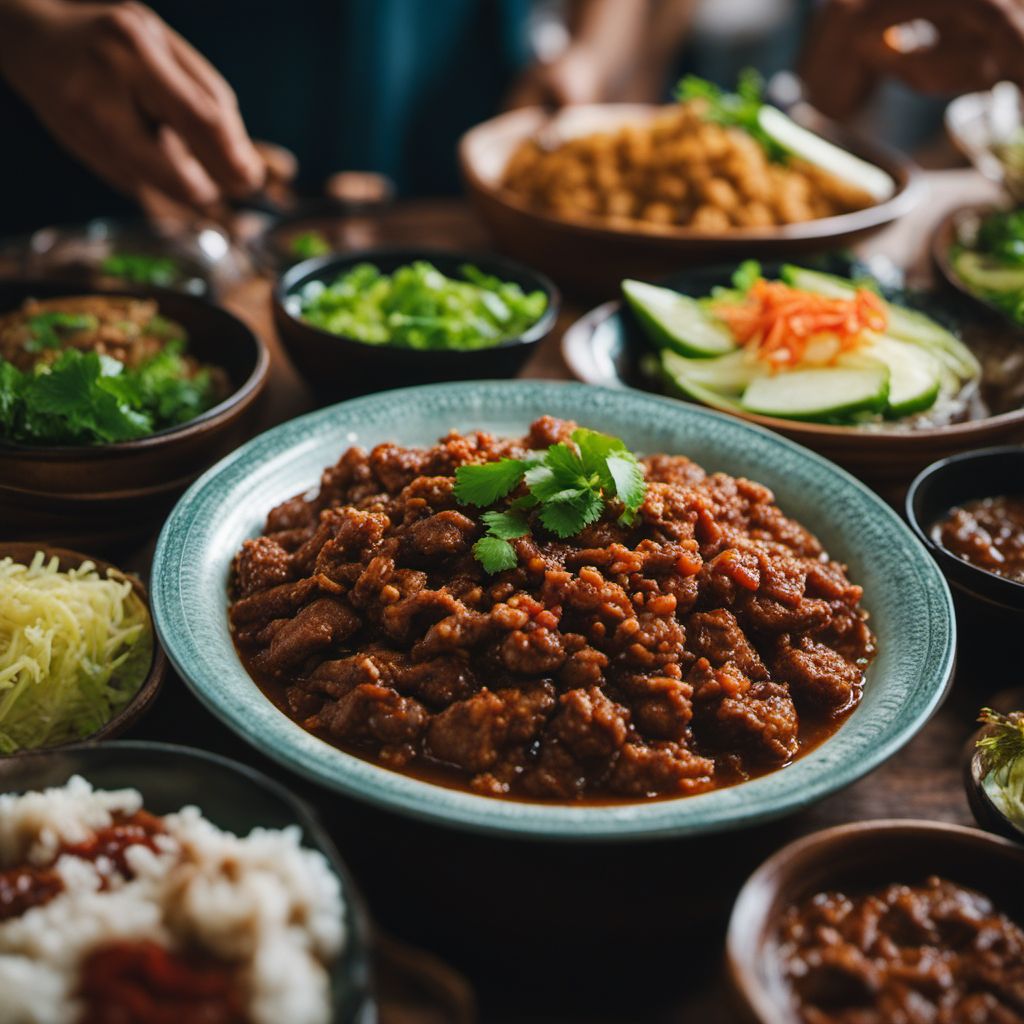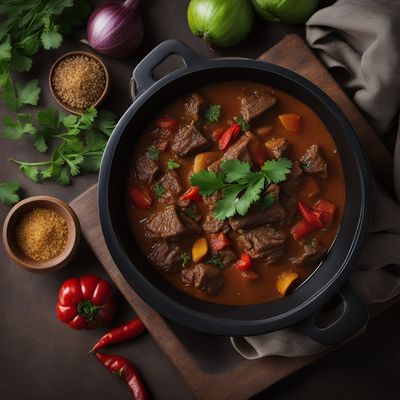
Dish
Bopis
Bopis is a popular Filipino dish that is known for its spicy and tangy flavor. The dish is made by sautéing minced pork or beef lungs and heart in onions, garlic, and chili peppers. The dish is usually served as an appetizer or as a main course with rice. Bopis is a great source of protein and iron, but it is high in cholesterol and fat. It is not recommended for people with heart disease or high blood pressure.
Origins and history
Bopis originated in the Philippines and is a popular dish in Filipino cuisine. It is believed to have been influenced by Spanish cuisine, which was introduced to the Philippines during the colonial period. The dish is often served during special occasions and celebrations.
Dietary considerations
High in cholesterol and fat. Not recommended for people with heart disease or high blood pressure.
Variations
There are many variations of bopis, including bopis with liver, bopis with vegetables, and bopis with coconut milk. Some recipes also call for the addition of vinegar or calamansi juice to give the dish a tangy flavor.
Presentation and garnishing
Bopis is usually served in a small bowl or plate. It is often garnished with chopped green onions or cilantro to add color and flavor to the dish.
Tips & Tricks
To make bopis less spicy, remove the seeds from the chili peppers before adding them to the dish. To make the dish more flavorful, marinate the meat in vinegar and soy sauce before cooking.
Side-dishes
Bopis is usually served with rice, but it can also be served with bread or crackers. It is often paired with a cold beer or a sweet soda to balance out the spiciness of the dish.
Drink pairings
Bopis is often paired with a cold beer or a sweet soda to balance out the spiciness of the dish.
Delicious Bopis recipes
More dishes from this category... Browse all »

Aab gosht
Indian cuisine

Abgoosht
Iranian cuisine

Adobo
Filipino cuisine

Adobo sa gatâ
Filipino cuisine

Adobong baboy
Filipino cuisine

Adobong baka
Filipino cuisine

Adobong dilaw
Filipino cuisine

Adobong hito
Filipino cuisine


